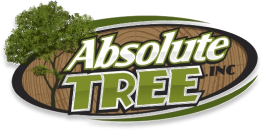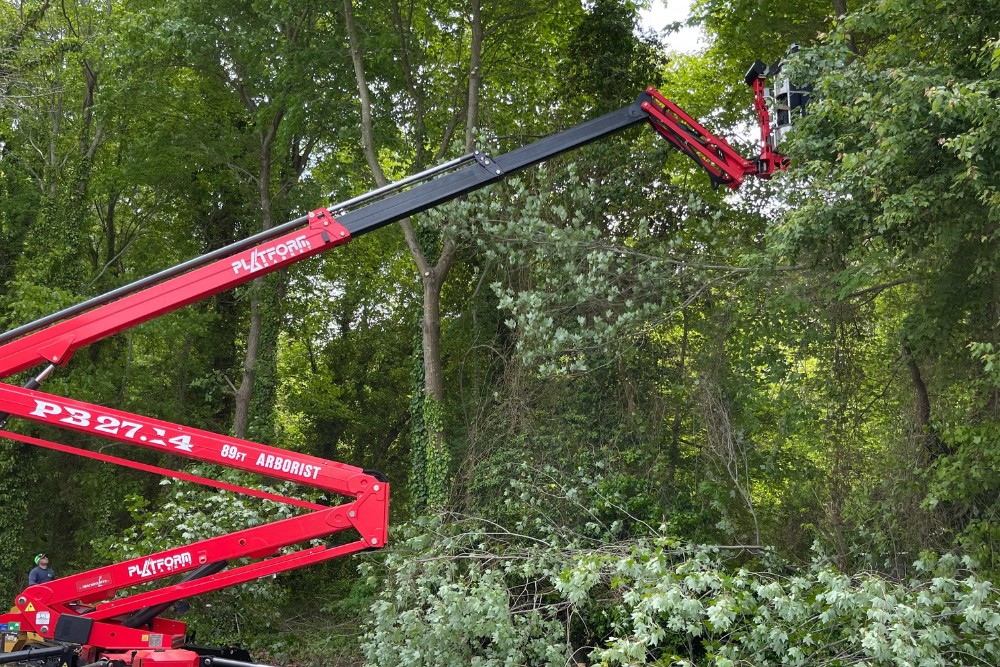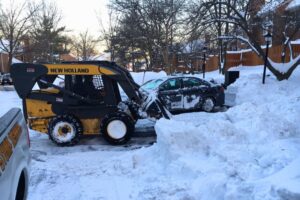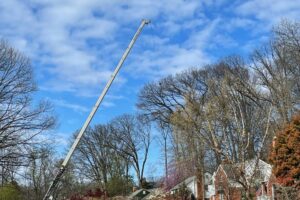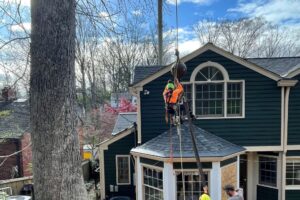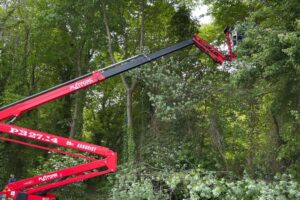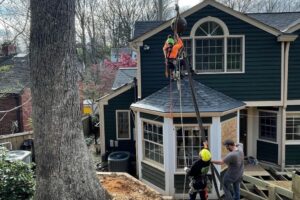Think your tree just needs a quick trim? Not so fast! Pruning the wrong way can do more harm than good, leading to weak branches, disease, or even tree death. Before you reach for those shears, learn what proper tree pruning really looks like.
Key Takeaways:
- Proper tree pruning requires careful consideration of goals, timing, and technique – it’s not just about aesthetics or randomly removing branches.
- Winter is generally the best time to prune trees in Northern Virginia, though spring works better for ornamental trees.
- Using the right tools (from hand pruners to chainsaws) and keeping them sharp and clean is essential for making proper cuts that won’t damage the tree.
- When trimming, never remove more than 25-30% of the tree’s canopy at once, and avoid harmful practices like tree topping, flush cuts, and lion tailing.
- Use the three-cut method for large branches to prevent bark tearing; start with an undercut, then a top cut further out, and finish with a final stub cut.
What Correct Pruning Entails in Northern Virginia
Tree pruning is complicated, and homeowners make many mistakes when performing the service themselves. There is a relatively narrow definition of “proper pruning,” and it involves understanding the timing, techniques, and goals for each tree.
Have the Right Goals and Expectations for Pruning
Tree trimming is often misunderstood. Some homeowners view it as something you do purely for aesthetic reasons to shape your tree. Others believe there are no limits to what and how much you can prune at one time. Neither of these are true.
The goals of pruning are varied, and include:
- Safety: Removing deadwood and weak branches to increase the safety of your tree during a storm.
- Training: Making cuts on a smaller tree to encourage it to grow with better structure and avoid developing weak competing trunks.
- Thinning: Strategically removing branches in a crowded canopy to allow for more light penetration and air circulation, reducing the risk of mold developing.
- Clearance: Cutting off low-hanging branches to allow for more room for foot traffic under your tree.
- Aesthetics: Pruning to help make your tree look more beautiful and add visual flare to your landscape.
Tailor your pruning goals to the environment you live in. Homeowners in dense, urban areas, like Alexandria or Arlington, should focus more on controlling size and increasing safety. Rural residents in Fairfax Station can prune with more of an eye for beauty.
WARNING: Keep pruning to a minimum, and never remove more than 25-30 percent of the tree canopy at a time.
Use the Right Tools for the Job
Prior to trimming, ensure you have the necessary tools to do the job correctly. The pruning tools you’ll need include:
- Hand Pruners: These pruners are for small branches one inch in diameter or smaller. If possible, choose a by-pass model, as they produce better cuts.
- Loppers: While they have a similar cutting action, loppers have a long handle to give better leverage and allow you to make clean cuts of tree branches up to 3 inches in diameter.
- Pole Saws: These are saws attached to long poles that allow you to cut elevated branches while remaining on the ground.
- Chainsaws: A chainsaw can cut through most branches. However, only use them when the situation dictates, as trying to cut a small branch with a chainsaw is dangerous and could lead to collateral damage.
No matter what tool you use, ensure it is in good working order before making any cuts. Your tools should be razor-sharp and free of dents or damage. If you are pruning diseased material, disinfect your tools after each cut to avoid spreading the disease.
Ensure the Timing is Right for Trimming
Appropriate timing is vital when trimming trees. Attempting to prune them in the wrong season can stress them and make them prone to diseases.
Winter is the best time to trim most trees in Northern Virginia. Trees are dormant in the winter, and insects and diseases are inactive. Your deciduous trees will also have lost their leaves, making it easier to see their structure and clean up afterward.
There are reasons to prune in other seasons other than winter, such as:
- Spring: Spring is best for ornamental trees (such as our state tree, the flowering dogwood). Time pruning to right after they flower to create a better shape and flowering next season.
- Summer: Keep any trimming light in the summer to avoid exposing your tree to insect and disease problems. Summer pruning allows you to see your tree fully leafed out and where it is overgrown.
- Fall: Avoid most pruning in the autumn except for removing deadwood. Fall trimming will cause the tree to put out new growth that will not survive the winter.
Make Proper Cuts
Proper trimming involves cutting branches at specific points. An arbitrary cut can kill or leave the branch vulnerable to insect and disease attacks. There are two main types of cuts you can make when trimming your trees:
- Heading Cuts: These cuts shorten the branch to a bud, encouraging lateral bud development. Cut the branch at a 45-degree angle just above an outward-facing bud.
- Thinning Cuts: This technique removes unnecessary branches by cutting them back to their point of origin. The cut should not be flush with the trunk but just outside the branch collar.
Use the Three-Cut Method for Large Branches
Trying to make a single cut on a large branch can cause it to snap off in the middle of the cut, tearing off the bark from the trunk and damaging it. To counteract this, arborists have developed a three-cut method for safely handling these large branches.
- Undercut: Make your first cut on the underside of the branch, about six inches from the trunk. Cut about ¼ to ⅓ of the way up and then stop. This cut will prevent the branch’s weight from peeling the bark when it falls.
- Top Cut: Move a few inches further out to make the second cut. Cut downwards to remove the branch and leave a short stub behind.
- Stub Cut: Remove the leftover stub with a final cut, ensuring you do not cut into the branch collar.

Using discredited practices like tree topping can severely injure your tree or kill it.
Avoid Discredited Practices
Plenty of pruning practices still in use are bad for trees and can potentially kill them. Arborists have attempted to inform homeowners of their danger, but you can still see them on the trees throughout our area. Some of these techniques to avoid include:
- Tree Topping: This practice involves picking a point and cutting everything above it on a tree. While people do it with the idea that it will make their tree smaller, the tree will put out growth in response to the damage, making it look ugly. Many trees will eventually die from tree topping.
- Flush Cuts: These are pruning cuts right against the trunk. This technique doesn’t allow the tree to compartmentalize the damage effectively, leaving it vulnerable to insects, diseases, and decay.
- Lion Tailing: This process removes many inner and lower branches, leaving most of the foliage at the end of limbs. This leaves your tree with branches more prone to breaking and limits its photosynthesis ability.
- Wound Dressing: Unlike humans, trees don’t need dressings to heal wounds. Leave pruning cuts uncovered to allow the tree to heal naturally.
Frequently Asked Questions About Tree Pruning
Tree pruning is complex, so we’ve compiled some common questions about it to help you understand more about the service and how to do it.
Do I need a permit to prune a tree in Northern Virginia?
In most municipalities, you will not need a permit to trim trees on private property. Some exceptions are when you want to prune street trees, as this often requires permission from your local government. Additionally, some HOAs may have restrictions about what you can prune.
How often should I prune my trees?
For mature trees, we recommend pruning them every 3-5 years. Pruning is best when it is light and done frequently, rather than removing large portions of the canopy every ten years. For young trees, pruning can be as frequent as a yearly occurrence, depending on the species. Many species thrive with a pruning schedule of every 2-3 years.
Does pruning make my tree more resistant to storm damage?
Yes, pruning trees makes them less likely to fail in a storm, a common occurrence in Fairfax County. Pruning can remove damaged branches that aren’t properly connected, as well as overly long branches that are more prone to breaking.
Trust Absolute Tree for Expert, Proper Pruning Every Time
Pruning your trees isn’t just time-consuming – it requires skill, precision, and the right techniques to keep them healthy and looking their best. One wrong cut can lead to lasting damage, disease, or safety hazards. So, why take the risk?
Let the experts handle it instead. Absolute Tree’s team, led by a Board Certified Master Arborist, ensures your trees are pruned the right way for strength, beauty, and longevity. Skip the hassle and call us today at 703-969-6207 or request an estimate online.
For the Absolute Best Tree Service in Northern Virginia, call Absolute Tree Today!
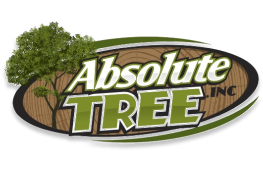
Author Profile: Ashley Davis
Over the last 19 years, Absolute Tree has grown a reputation as one of the premier tree service companies in the Northern Virginia areas. And there’s a good reason for this—we love trees and our passion for them shows. When you call on Absolute Tree for tree service, you aren’t just getting “some guys who cut down trees.” You’re hiring highly skilled arborists who understand the growth of trees and consider tree care an art form.
Stay Up-to-date!
Swing in each month for new articles, pest alerts, local resources, tree care tips, tree health updates, and landscape maintenance ideas
